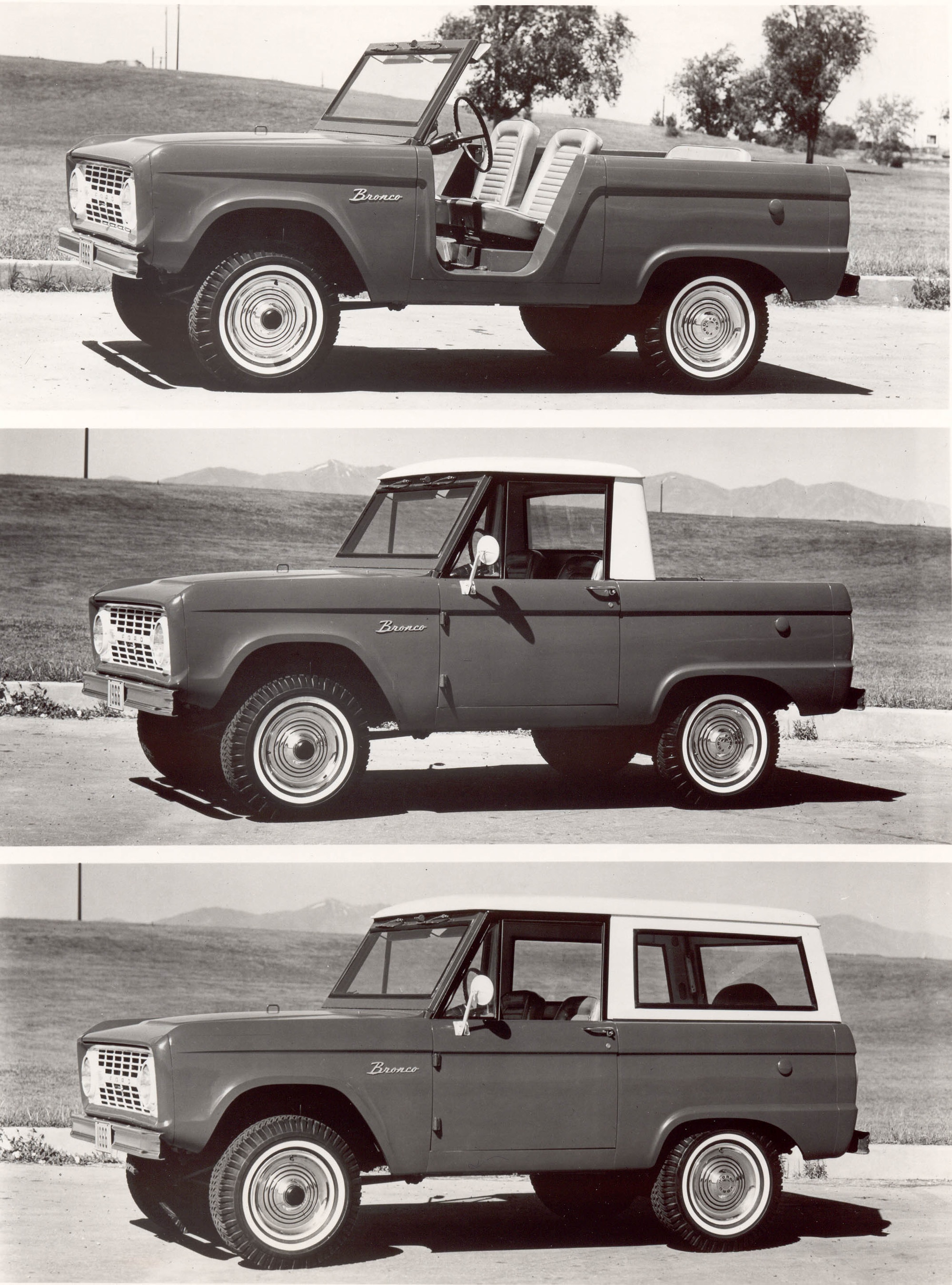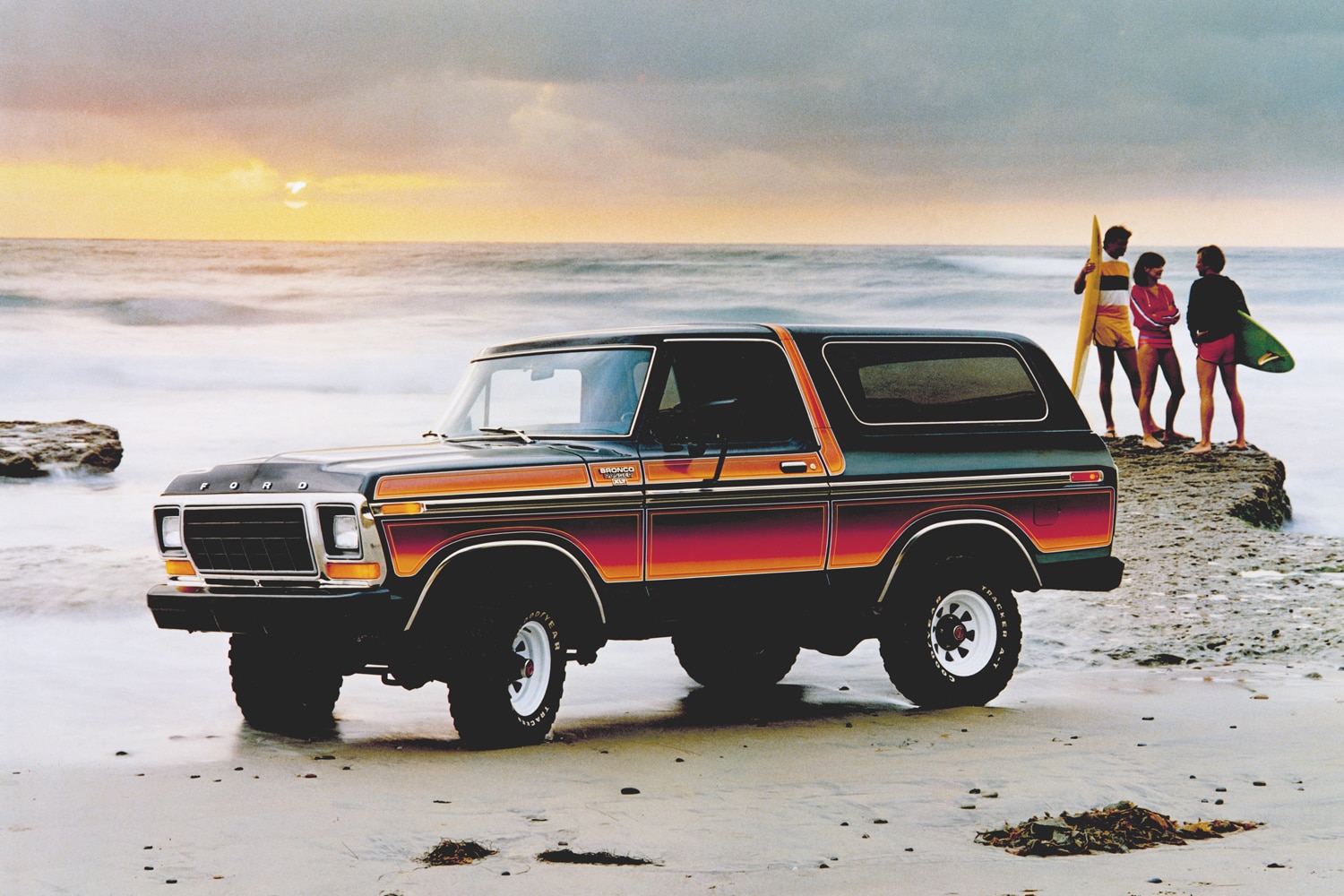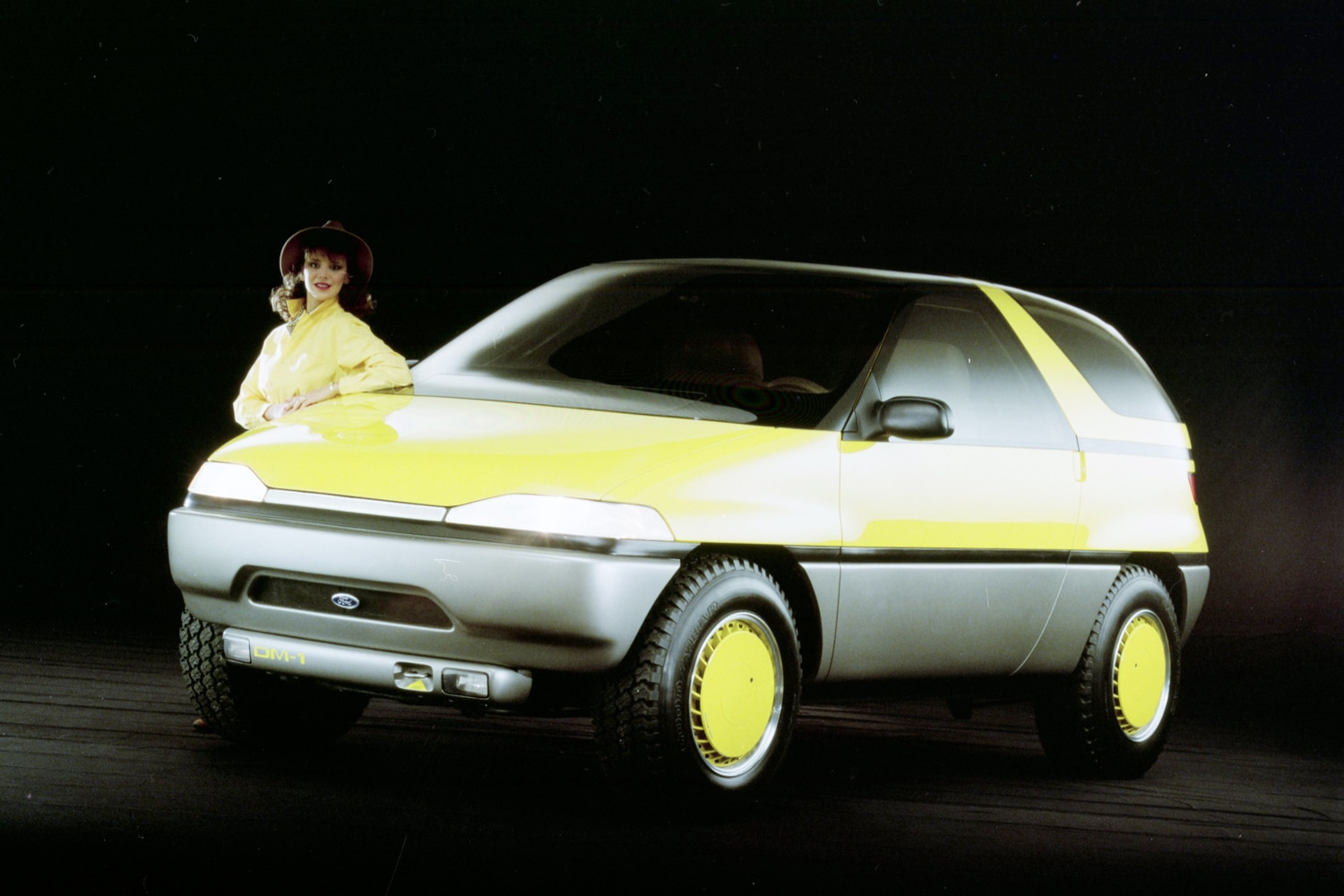8 Things You Don't Know About the Ford Bronco
Brush up on the history of Ford's iconic off-roader and impress your friends with lesser-known facts of this hot model.
Capital One
It’s hard to believe it’s been almost two years since Ford revealed its sixth-generation Bronco and people are still buzzing about it. Want to join the conversation? Here are some facts you can drop around the water cooler to impress your enthusiast friends.
1. Is it a Horse or a Goat?
The Bronco name appears as early as 1963 within Ford’s internal documents, but then so does another animal’s name. A memo discussing the original off-roader project describes the vehicle as the GOAT, shorthand for “goes over any terrain.”
While Ford didn’t use this acronym for the first-generation Bronco—which came out in 1965 as a 1966 model—the automaker revived it decades later for the current model’s terrain-management system. Only now, according to Ford, GOAT stands for “goes over any type of terrain.”
2. The Original ’66 Bronco Kept It Simple
At launch in August, 1965, the Bronco had a fairly straightforward order form (at least compared with today’s model). Ford offered the earliest Bronco in three body styles: a roadster (with doors and a top as options), a two-door pickup, and a hardtop wagon with seating for up to five. Until the automaker added a V8 to the options sheet in March, 1966, the lone powertrain was an inline-six paired with a three-speed manual transmission.
 Ford
Ford
That’s a little simpler than the current Bronco’s offerings. Six of the eight trim levels are available in two- or four-door form. Power comes from either a turbocharged, 2.3L four-cylinder or a twin-turbocharged, 2.7L V6 engine—unless you buy a Raptor, which comes standard with a twin-turbo, 3.0L V6. Ford also offers two transmissions and three transfer cases.
3. The First Bronco Looks Like a Miniature Horse by Today’s Standards
Given how tall the latest Bronco stands—specifically, 71.9 inches tall, as well as 173.7 inches long, and 75.9 inches wide in base, two-door form—it’s easy to forget just how compact the first generation was. Early Broncos rode on a 92-inch wheelbase (versus 100.4 today) and were 152.1 inches long and 68.8 inches wide. To put that in context, the Fiesta-based EcoSport subcompact crossover—the smallest SUV in Ford’s current lineup—eclipses the original Bronco in every dimension but height.
4. The Second Generation Was Short-Lived
Apart from some minor mechanical and trim evolutions, the early Bronco design would remain in production with almost no change through the 1977 model year.
 Ford
Ford
Ford contemplated launching a new generation for the 1974 model year, initially thinking it would keep the Bronco as a compact SUV before entertaining the idea of turning it into a larger vehicle based on the full-size F-Series pickup.
 Ford
Ford
This would have made it a direct competitor to the Chevrolet K5 Blazer and the Dodge Ramcharger, but Ford delayed its plans after the 1973 oil crisis slowed SUV sales.
 Ford
Ford
Ford ultimately did introduce an F-Series-based Bronco in 1978. This second generation lasted only two years before the automaker moved both the F-Series and Bronco to a new platform, starting a third generation for the latter.
5. Ford Has Toyed With the Idea of a Baby Bronco Several Times
Launched in 2020, the modern Bronco Sport broke new ground by distilling its brother’s rugged spirit into a smaller, more approachable crossover. It rides on the same platform that underpins the current Escape crossover and the Maverick compact pickup.
This wasn’t Ford’s first flirtation with building a Bronco on something other than a truck platform.
 Ford
Ford
In 1988, Ford transformed design student Derek Milsap’s proposal into a concept car, creating the Bronco DM-1. Both its rounded appearance and its mechanical underpinnings—cribbed from the front-wheel-drive Escort compact car—were a far cry from any previous Bronco’s style.
 Ford
Ford
Ford surprised crowds at the 2004 Detroit auto show with another Bronco concept, albeit one that looked more like the first-generation model. Mechanically, it was vastly different from any prior Bronco, as it rode on the first-gen Escape’s CD2 platform and used a turbodiesel engine borrowed from the European Mondeo sedan.
6. The Bronco Has Always Called Michigan Home
Ford has built every generation of the Bronco at its assembly plant in Wayne, Michigan. Today, the factory employs 4,900 workers and also assembles the Ranger midsize pickup truck.
7. There Are Design Easter Eggs Hidden All Over the New Model
Ford designers incorporated a number of whimsical touches throughout the vehicle’s exterior and interior. On the doorjamb you’ll see a drawing of a first-generation Bronco bouncing its way across the safety warning label. Next, look closely at the tailgate filler panel and the section of roll cage just above the front passenger: coordinates molded into both spots point to a trail in Johnson Valley, California, where engineers honed the Bronco’s off-road tuning. Embossed messages on the splash liners in the wheel wells implore owners to modify their vehicles with “Lift me, baby!” And drawings of each first-generation Bronco body style lurk beneath the fuel-filler door.
The recently added Bronco Raptor incorporates a few unique Easter eggs of its own. Discreetly stamped on the hood louvers are the years 1967, 1969, 1971, and 1972—times when a Bronco raced to victory in Baja California. Opening the fuel-filler door reveals small drawings of various racing Broncos.
8. There’s an Even Wilder Bronco than the Raptor
What’s the biggest, baddest, most expensive Bronco that Ford currently offers? Interestingly, it isn’t the $70,000 Raptor, but the super-exclusive, race-ready Bronco DR.
 Ford
Ford
Developed and built in partnership with Multimatic—the same Canadian firm that helped engineer and produce the current Ford GT supercar—the Bronco DR is essentially a turnkey desert-racing machine, boasting a full roll cage, additional suspension travel for high-speed jumps, and a 5.0-liter V8—similar to that found in the Mustang GT and Mach 1—said to produce more than 400 horsepower.
Only 50 examples will be built in 2022, each with a price in the mid-$200,000s. If you haven’t already thrown your hat into the ring, you’re out of luck: Multimatic has stopped taking inquiries from interested buyers



